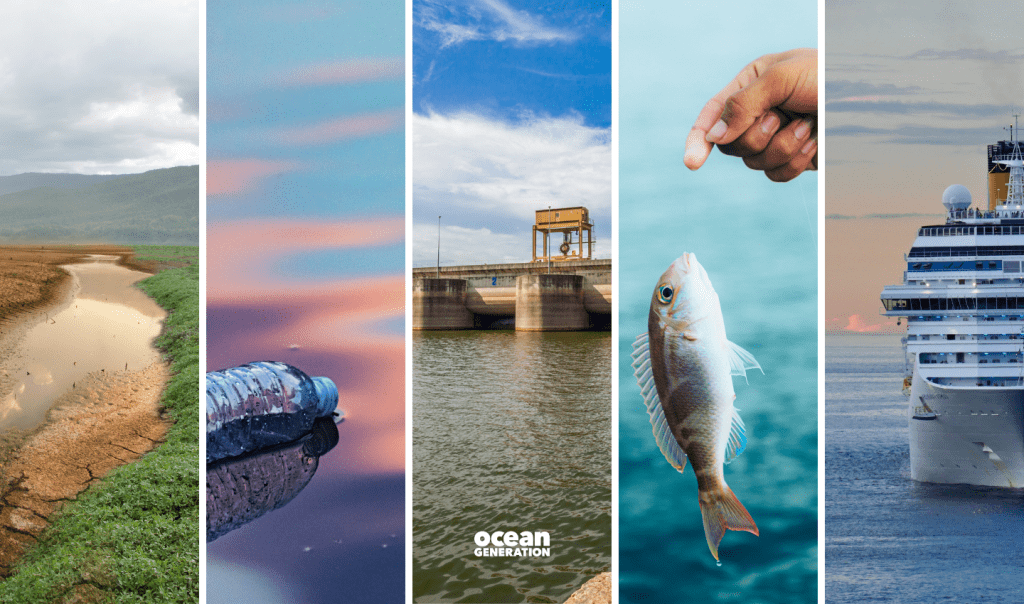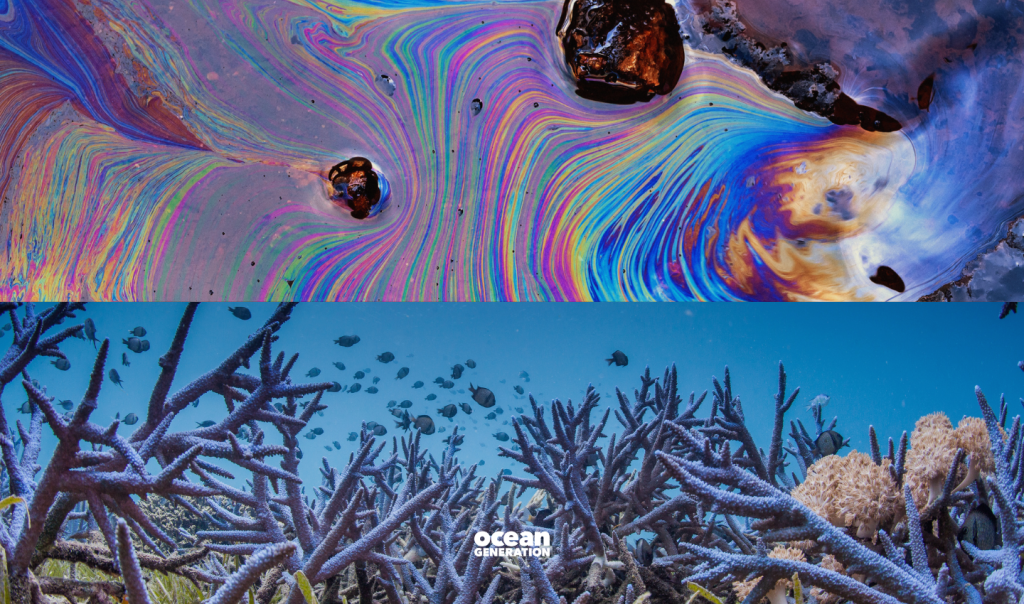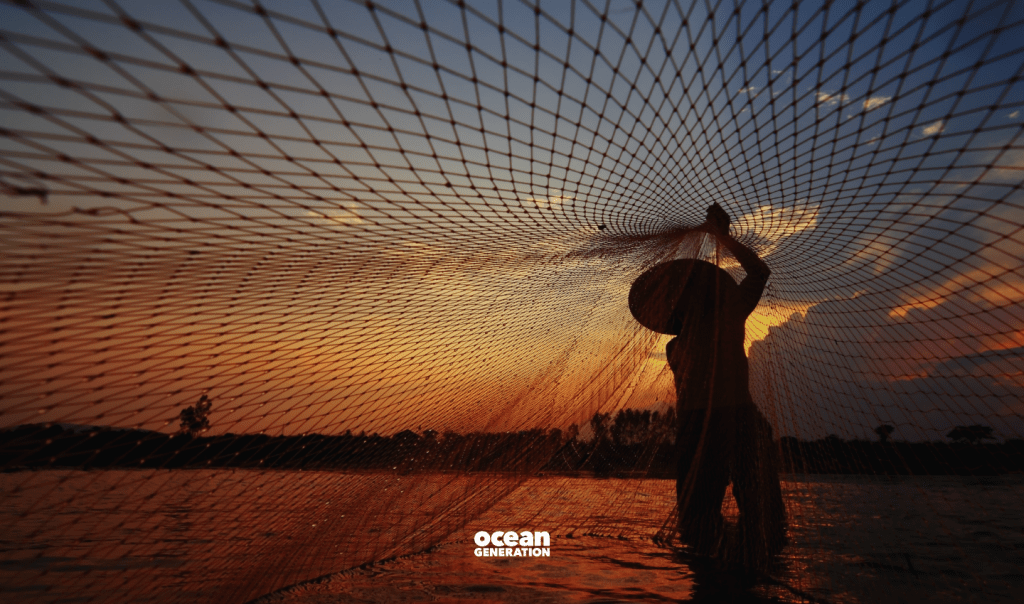- Our Impact: Threats
- Science: Explained
Our Impact: Understanding the 5 Ocean Threats

The Ocean is a flourishing ecosystem that can maintain itself.
But our actions have been negatively impacting the Ocean for decades, at a rate our Ocean cannot keep up with.
There was a time when we thought the Ocean was endless. So, we treated it that way: Taking what we wanted, when we wanted, in whatever quantity we liked.
It took us far too long to realise the many ways we threaten our Ocean. But now we know better.
Our Ocean is one of our planet’s most valuable ecosystems.
The Ocean provides over 50% of the world’s oxygen, captures 30% of human-made carbon emissions, and mitigates the climate crisis. The bottom line: We need a healthy Ocean for a healthy planet.

How does human activity threaten the Ocean?
Our Impact work explores the 5 key ways human actions negatively impact the Ocean.
Many of the underlying actions causing these Ocean Threats have existed throughout the course of human history – but have become unsustainable more recently because of rapid population growth and the consequent scale of our impact on the marine environment.
What human activity impacts the Ocean the worst?
There are no known, credible, scientific classification of the severity of these Ocean threats. What does that mean – simply? We can’t tell you which of the five threaten the Ocean the worst.
But there’s no doubt that all of these Ocean threats are inter-related and can combine to have vast negative impacts on Ocean health, marine habitats and marine life which, in turn, pose serious threats to human health.
What are the 5 human-made Ocean threats?
1. Climate change: We can’t talk about climate change without the Ocean
It’s widely accepted that human actions are the primary drivers of climate change. The biggest culprit? Burning fossil fuels (for example, coal, oil and gas) to produce energy is the main cause of climate change.
Signs of climate change are all around us – and impossible to ignore. But too few of us understand the important role our Ocean plays in mitigating the climate crisis.
How does the Ocean mitigate climate change?
Our Ocean plays a fundamental role in regulating global temperatures, storing massive amounts of carbon, and capturing heat from the atmosphere.
Although the Ocean drastically mitigates climate change, it’s also impacted by climate change. These changes (like increased Ocean heat), have negative consequences on Ocean health and thus, all of us.
2. Pollution: It’s not just plastic polluting our Ocean.
Plastic is, by far, the most common and impacting pollutant in the Ocean.
80% of plastic in our Ocean comes from the land and most of that is made up of single-use plastic items; products we use once, then throw away. And that’s the biggest problem with plastic: there is no “away.”

3. Coastal Infrastructure Development: Why do we need to protect our coastlines?
2.5 billion people live within 100km from our Ocean.
Coastal regions are densely populated areas with increasing rates of population growth (and who can blame them? Living near the Ocean has numerous benefits.)
But rapid urbanisation of our coastlines has negative impacts on the environment – many of which are linked to climate change.
With higher frequencies of natural weather events (like cyclones and hurricanes), erosion and land loss, and flooding, coastal regions have never been this vulnerable.
4. Resource Extraction: What resources do we extract from the Ocean?
Around 3 billion people rely on the Ocean for their primary source of protein: Seafood.
Seafood is the most notable thing we extract from the Ocean but it’s not the only thing. We also extract minerals, fossil fuels, and plants from the Ocean.
Our Ocean – as incredible as it is – is not limitless.
We must recognise the limits of Ocean resources and control the quantity and frequency at which we extract resources from the Ocean; allowing it time to replenish and regenerate. Otherwise, we will reach a point of no return.

5. Daily Ocean Use: What’s the impact of daily human actions on the Ocean?
Humans work hard and always have something on the go. The Ocean is no different.
All around the world, our Ocean is in use every day. From cargo shipping for trade, passenger traffic for travel to commercial fishing and research – the Ocean is used widely. How we make use of the Ocean is what’s important.
We need to turn to using the Ocean sustainably to protect the awe-inspiring ecosystem that supports all life on Earth.
What can I do to protect our blue planet?
Understanding the 5 main threats our Ocean faces is step one. Step two is doing something about them. Some of these Ocean Threats can feel overwhelming – but they don’t have to be.
Working together is humanity’s superpower. And it remains our best tool for solving the world’s biggest problems, and simultaneously, restoring our Ocean.
Three ways you can take environmental action – with a focus on the Ocean – right now:
- Subscribe to our newsletter to receive monthly impact in your inbox; explore our Science Hub; or visit our Instagram page for bite-size environmental education.
- Recognise that you don’t have to be perfect.
Ask yourself: What can I do right now to decrease my carbon footprint? What can I do to be a voice for our Ocean and empower others to do the same? - 20 actions to reduce and reuse plastic.




